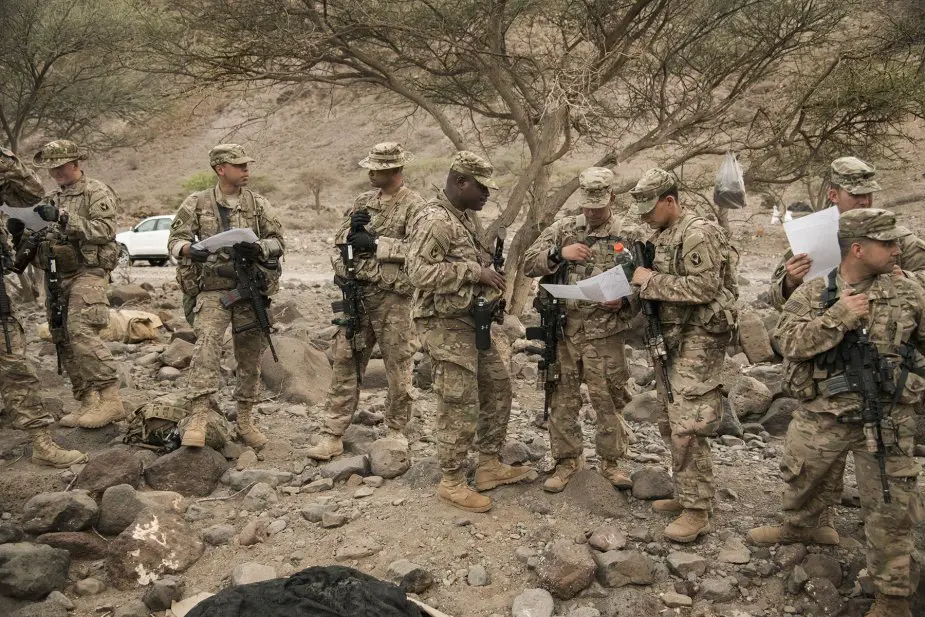SIPRI launches reports on new external security politics of the Horn of Africa region
SIPRI (Stockholm International Peace Research Institute) has expanded its research on security issues in the Horn of Africa region by launching a new series of publications investigating major questions for the future security and stability of the region. Notably, it highlights the increasing importance of geopolitical, commercial and military competition as the driver of foreign military deployments to the region.

Arta, Djibouti. U.S. Army soldiers from the Alpha Coy, 1st Bn, 124th Inf Rgt, receive location points during night land navigation training, Aug. 5, 2016 (Picture source: USAF/Staff Sgt. Tiffany DeNault)
The Horn of Africa is undergoing far-reaching changes in its external security environment. A wide variety of international security actors—from Europe, the United States, the Middle East, the Gulf, and Asia—are currently operating in the region. As a result, the Horn has experienced a proliferation of foreign military bases and a build-up of naval forces. The foreign military presence in the Horn increasingly operates as part of much wider military networks—across the Middle East and the Gulf, and the Indian and Pacific oceans.
The growing role of external security actors in the Horn region presents major challenges for existing African and Horn regional security structures, which are poorly adapted to the new external security politics of the region. It raises the prospect of proxy struggles, growing geopolitical tensions and a further extension of externally driven security agendas in the region.
The series of publications includes a SIPRI Background Paper that maps the growth of foreign military forces in and around the Horn over the past two decades; a SIPRI Insights paper that explores the factors driving foreign military deployments to the region; and a SIPRI Policy Brief that identifies priority areas for action to help the Horn countries in managing the new external security politics of the region.
Operation Enduring Freedom – Horn of Africa (OEF-HOA)
Operation Enduring Freedom – Horn of Africa (OEF-HOA) is the United States military operation to combat militant Islamism and piracy in the Horn of Africa. It is one component of Operation Enduring Freedom (OEF), which includes eight African states stretching from the far northeast of the continent to the oil-rich Gulf of Guinea in the west. The other OEF mission in Africa is known as Operation Enduring Freedom – Trans Sahara (OEF-TS), which, until the creation of the new United States Africa Command, was run from the United States European Command.
The Combined Joint Task Force – Horn of Africa (CJTF-HOA) is the primary (but not sole) military component assigned to accomplish the objectives of the mission. The naval component is the multinational Combined Task Force 150 (CTF-150) which operates under the direction of the United States Fifth Fleet. Both of these organizations have been historically part of United States Central Command. In February 2007, United States President George W. Bush announced the establishment of the United States Africa Command which took over all of the area of operations of CJTF-HOA in October 2008. CJTF-HOA consists of about 2,000 servicemen and women from the United States military and allied countries. The official area of responsibility comprises Sudan, Somalia, Djibouti, Ethiopia, Eritrea, Seychelles and Kenya. Outside this Combined Joint Operating Area, the CJTF-HOA has operations in Mauritius, Comoros, Liberia, Rwanda, Uganda and Tanzania. The American contribution to the operation, aside from advisers, supplies, and other forms of non-combat support, consists mainly of drone strikes targeted at Al-Shabaab. These are estimated to have killed roughly 400 militants as well as 3 to 10 civilians. Other American combat operations include manned airstrikes, cruise missile strikes, and special forces raids.


























